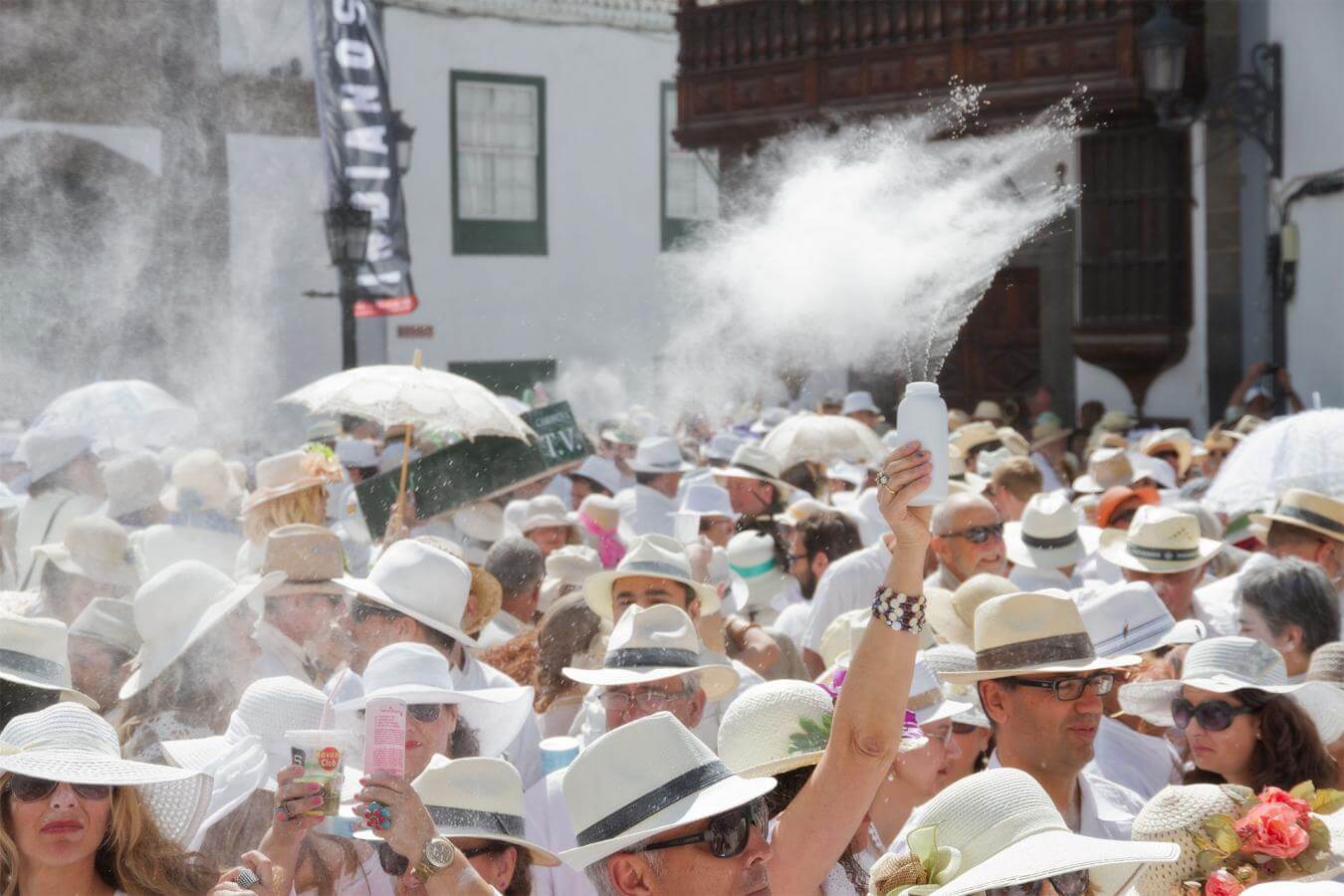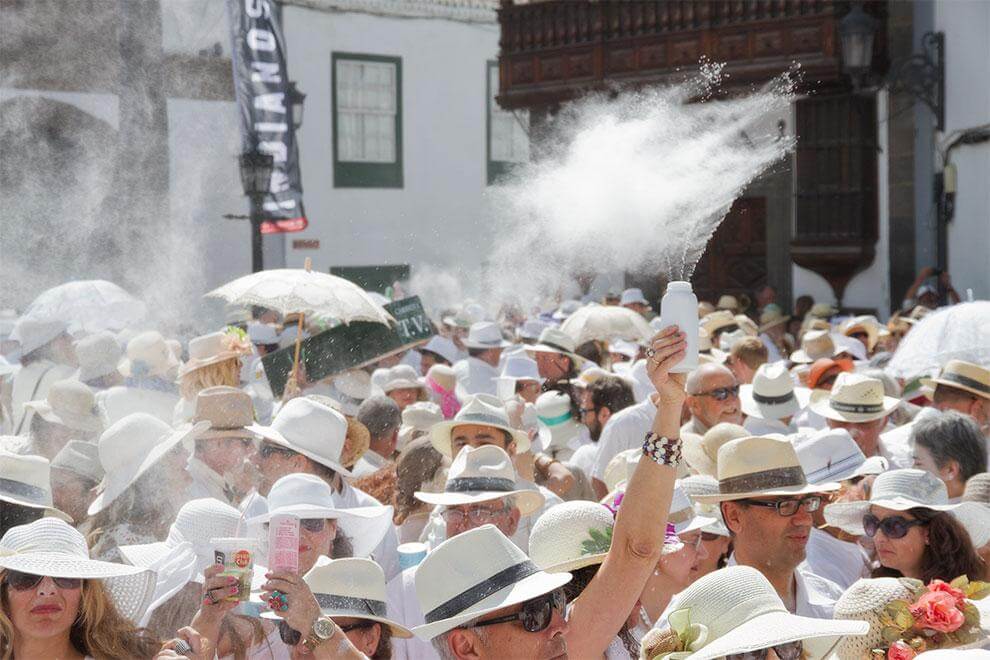The cloud of talcum powder reaches the third floor of the houses on Calle Real de Santa Cruz de La Palma. Below, on the cobblestones of the capital of La Palma, a tide of 80,000 people in period dress sloshes past.
La Palma's embrace of Cuba
Every year the party of Los Indianos is celebrated on the Monday of the La Palma Carnival. It is designed as a tribute to the island’s relationship with Cuba.
The party relates to the traditional arrival of Canary Islanders from Latin America loaded with gold and jewels in the 18th, 19th and 20th centuries. In a comical nod to the ostentatiousness of the rich, the dramatic celebration involves participants donning white suits ornamented with countless accessories. Raquel de Paz, the head of the Municipal Sewing Workshop, says that La Palma changes dramatically for the carnival. “[In La Palma] we don’t normally dress up…but we absolutely dress up for Los Indianos.” Each year the Los Indianos Carnival is a frenzy of colour and noise with fabulous costumes and accessories. It is a moment in the year when everyone is encouraged to get together in search of euphoria.
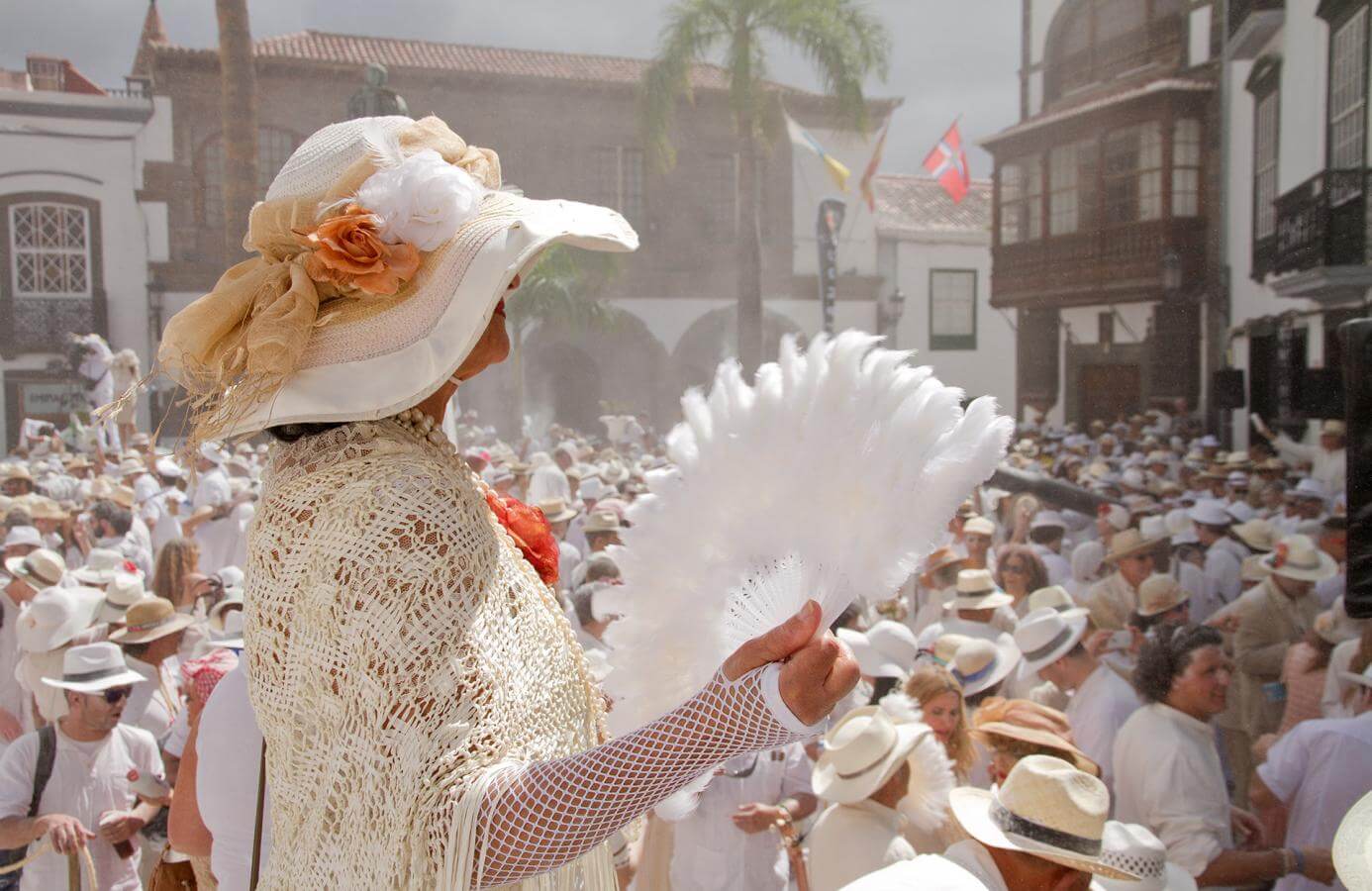


The Cabrera Santos family are important to the history of the Los Indianos Carnival. In the 1960s the family decided to parody the arrival of Canary emigrants who were returning to their home country after having made money in the Americas. “During a meeting at the Real Club Náutico de La Palma we came up with the idea of dedicating the Monday of the carnival to the La Palma temperament. We all have relatives who went to Cuba or Venezuela and then returned,” says Manolo Cabrera who was a child during the early years of the festival in the 1960s. During the first few years of the festival it was only the Cabrera Santos family and a few of their friends who dressed up. “[In those days] we had authentic clothes and jewellery from the true indianos. These things had been kept at the family house,” says Manolo Cabrera. In 2003 the City Council of Santa Cruz de La Palma paid tribute to Cabrera family for their contribution to the carnival.
After the first year of the Los Indianos Carnival when there was only modest participation, the celebration grew in popularity. Local people saw something in the event that they could identify with and a sense of momentum and excitement developed. Word spread. Soon partygoers joined the festivities from parts of the Canary Islands outside of La Palma. Then revellers came from mainland Spain. In the year 2000 news of the originality of the carnival was publicised in important publications such as El Viajero, El País, National Geographic, and, the prestigious British newspaper, the Guardian. Nowadays the La Palma festival, which Los Indianos constitutes an important part, is ranked amongst the top 10 festivals of its kind in Europe. During the carnival period La Palma’s population swells by a factor of four. The Los Indianos section of the La Palma Carnival really begins on Sunday with Los Indianitos, an event designed specifically for children. On the Monday of the festival families dress up and gather together very early in the morning. At around 9 am the bands assemble around La Alameda, Plaza de Santo Domingo and Plaza de España in the La Palma capital. At 9.30 am the founders of the Municipal School of Theatre, Antonio Abdo and Pilar Rey, together with the Cabrera family, stage La Espera which is a parody of the reception of the Indianos that takes place in the atrium of the Ayuntamiento de Santa Cruz de La Palma, the local town hall.



La Negra Tomasa is an important symbolic figure during the festivities, and another meeting point during the event is the house of La Negra Tomasa, or, in Spanish, la casa de La Negra Tomasa, which is on Calle San José. Partygoers crowd into the courtyard to witness Víctor Lorenzo Díaz Molina, better known as Sosó, play the role of La Negra Tomasa. “The crowd shout at me while my daughter-in-law does my makeup,” says Víctor Lorenzo Díaz Molina. “There are so many people who come to see me at the festival now that they have to send a jeep to take me to the port so that I can break through the crowds.” Once at the port, La Negra Tomasa gets on a boat and travels along the coastline before returning to port at the Estación Marítima. The arrival at port is the moment when La Negra Tomasa gets the chance to re-enact the arrival of the Indianos. At the harbour, La Negra Tomasa is met by a crowd as well as by the mayor and another government official in charge of the carnival. “[The crowd] has made me cry with emotion,” says Víctor Lorenzo Díaz Molina. As one of the protagonists of the festival for twenty years, Víctor Lorenzo Díaz Molina was commended by the local government in 2018 with the Santa Cruz de La Palma Gold Medal. Then, in 2019, as a further sign of the fundamental importance that La Negra Tomasa plays in the festival, the Santa Cruz de La Palma City Council commissioned Juan Carlos Martín, a regular designer for the Municipal School of Theatre and Dance to create a La Negra Tomasa costume at the Municipal Sewing Workshop.
Clothing is such a vital part of the Los Indianos Carnival that the City Council of Santa Cruz de La Palma launched a special Los Indianos clothing workshops in 2006. “We wanted to develop the environment which would allow for costumes to be properly looked after. They are a vital part of the carnival, and we wanted them to be authentic, so we had to consult historians,” says Raquel de Paz. The costumes are so important that designers even go to the lengths of specially decorating the shoes of partygoers. Pamela hats, fascinators, and other original head garments are produced. Watch chains and jewels, amongst other luxurious items, are important as well. “Cuban cigars are typical,” says Raquel de Paz. Banknotes complete many outfits. They are often seen protruding from revellers costumes, especially out of pockets, hats, and suitcases.
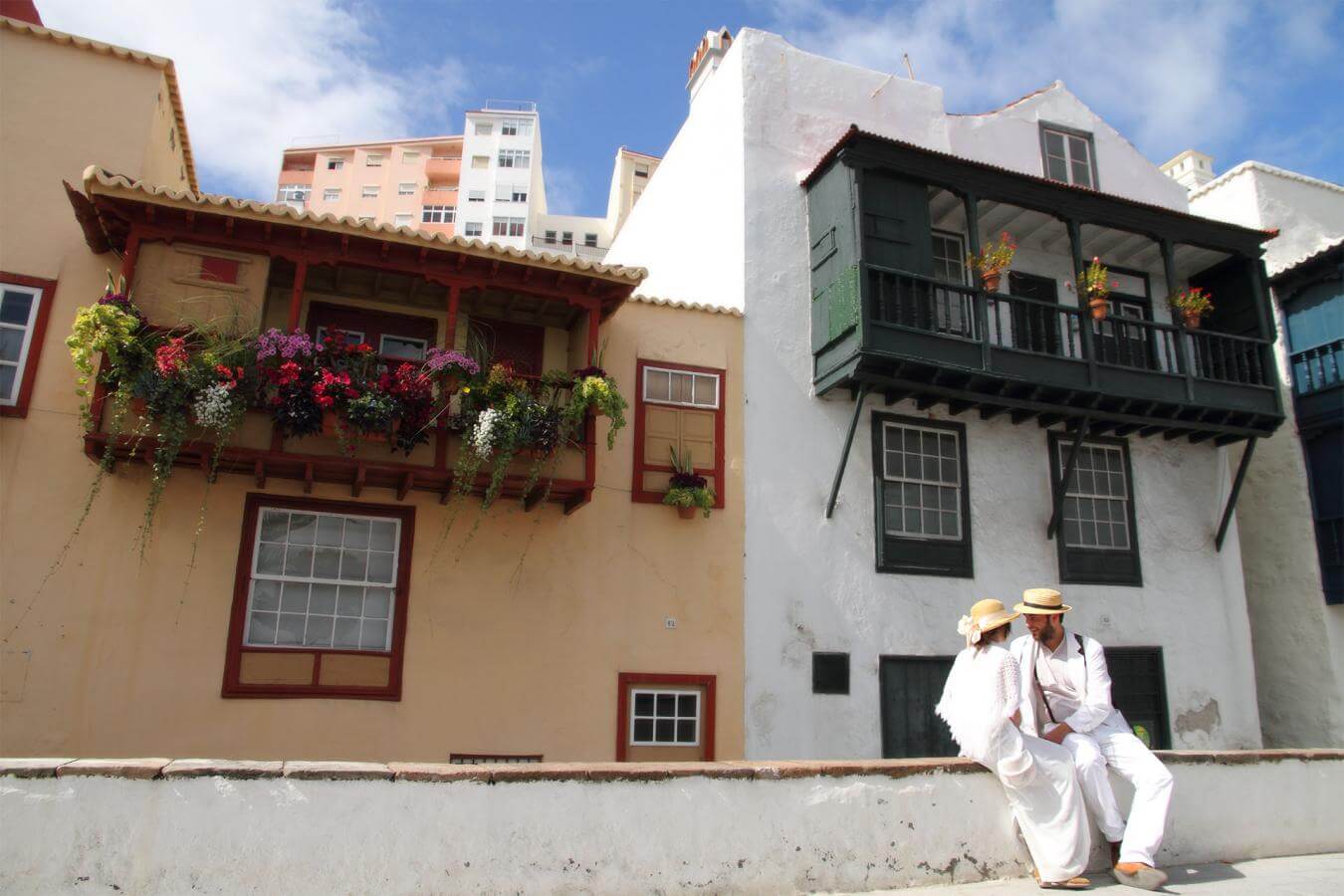


The tide of Los Indianos dressed in white takes to the main streets of the capital on Carnival Monday. There is a procession of people that receives La Negra Tomasa at the port and then moves down Calle Real to Plaza de España where partygoers liven up the atmosphere with Cuban music.
The culmination of the Los Indianos Carnival takes place at around noon on Monday when La Negra Tomasa arrives at the Plaza de la Negra Tomasa. The figurehead of the festival carries out a comic dance routine to the jubilation of the crowds of thousands. After this, the mayor, the consul of Cuba for the Canary Islands and the government official in charge of the festival unveil the plaque which renames Plaza de España as Plaza de La Habana for a day in honour of the celebration.



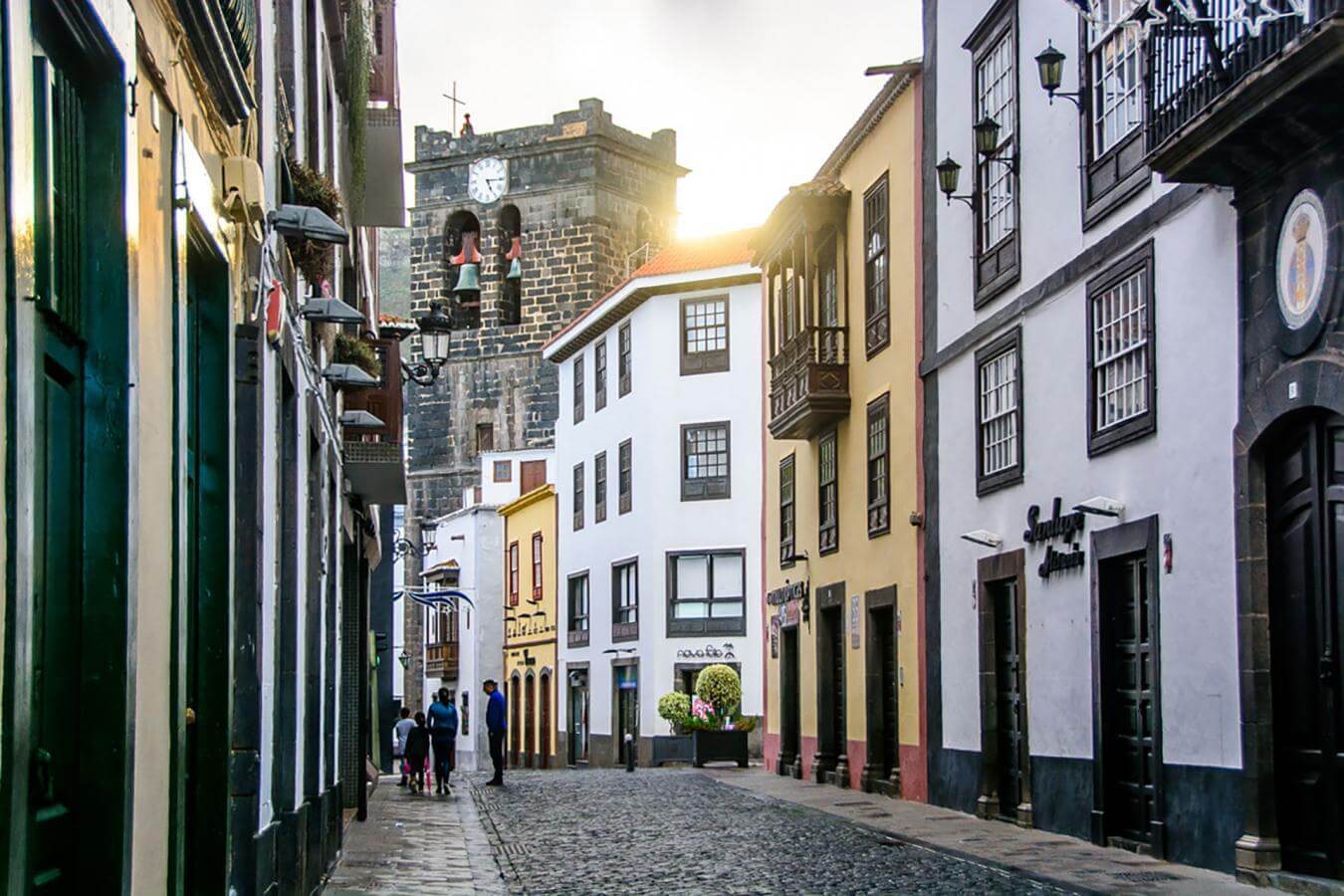
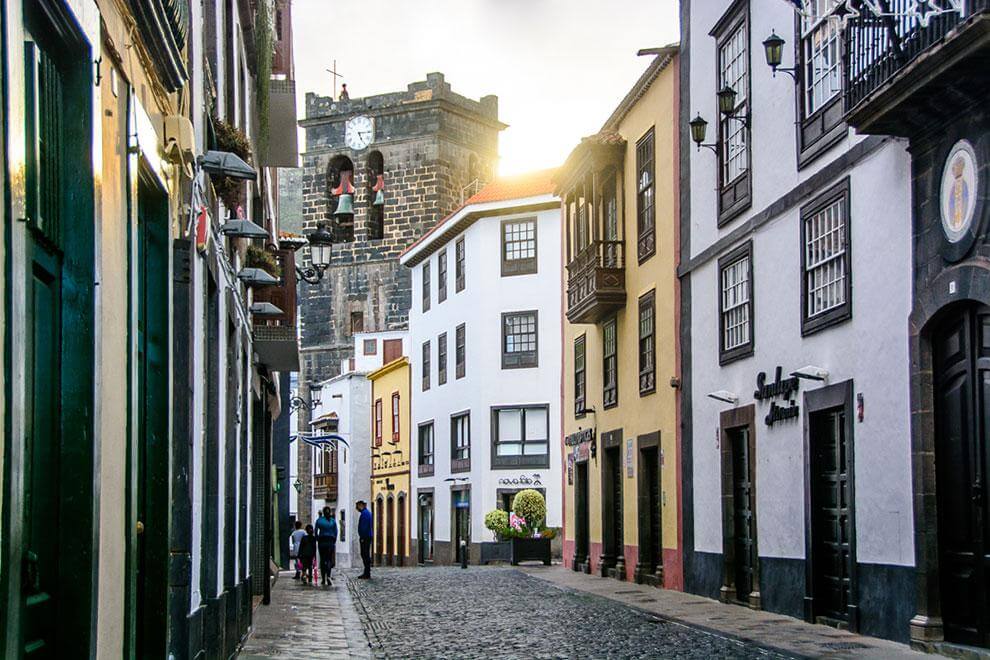

During the Los Indianos Carnival the local government distributes 5000 talc containers which partygoers can throw at one another. The talcum powder throwing begins early on Monday afternoon in La Avenida de Los Indianos. Everybody ends up smeared from head to toe with white powder. (This tradition relates to a 19th century Cuban sect, Ñañiguismo.). The Los Indianos Carnival continues until the early hours of Tuesday morning. During the final hours of the festival there are performances of different kinds for the crowds in Plaza de La Alameda and the Recinto Central del Carnaval. The Los Indianos Carnival is a nod to the strong ties between La Palma and Cuba. The cheers and good will of the crowds during the festival symbolises the quality of ongoing relations between the two islands.



